 Nadia Duwaik |
|
|
This leaves many traditional brands wondering how to tap into this new generation of spenders and how to market to them.
It’s no secret that social media is taking the world by storm. It seems like everyone is on one platform or another, and according to Nielsen, social media platforms account for around 50 percent of all time spent online. It’s more than apparent that old and new generations alike are partaking in their fair share of social media time.
Social media isn’t just used for the occasional life update or selfie; it’s now being used as a buying and influence tool for brands and consumers alike. With Nielsen reporting that 75 percent of consumers rely on social media to inform purchase decisions, it’s no surprise that marketers are taking full advantage of this new trend, especially when it comes to traveling. According to a report put together by Facebook and Deloitte after family and friends, social media is the most popular way travelers find trip ideas.
Below are a few ways travel brands are leveraging the social sphere to connect with a new generation:
Travel brands are now using social media to engage their current audience and reach new consumer bases. One way brands use their own social media platforms for outreach is by hosting their own giveaway or contest. The rules of the promotion may be as simple as commenting on a particular post, which helps boost their engagement. Another way is to have followers tag friends and colleagues, this increases brand awareness and generates new followers.
Through these promotions, consumers are oftentimes requested to use a specific hashtag and by doing so, the photo or video content they are required to submit to enter creates a positive ripple effect for the brand. For example, the EVA Airlines #EVAWorldTour promotion was able to not only raise awareness for the Star Alliance airline but also generated direct ticket sales via a click to book mobile promotion and retargeting through social media advertising, executed simultaneously.
Social media has now made it easier than ever to turn everyday consumers to brand ambassadors and changing how they are rewarding consumers for their loyalty.
Jet Blue, for example, has their Go Places app, which rewards customers for checking-in at Jet Blue Terminals on Facebook. Customers are able to unlock reward points for real rewards. Not only is this a great brand awareness tactic, but is also an incentive to keep consumers coming back, which helps builds a loyal fan base as well.
Not all social media users are created equal in terms of value to marketers. Some carry a lot more resonance and reach a massive audience who are willing to listen to whatever it is they are selling. These users are called influencers and the practice of utilizing these people to promote your brand or service is what we like to call influencer marketing.
Influencer marketing is one of the most rewarding tactics brands can use to leverage and really hone into a variety of social media platforms. Utilizing influencers is a great way to engagement, reach and newfound awareness towards established brands.
Disney recently launched awareness about their new “Adventures by Disney”, where families travel to select destinations with a guide and group. The family oriented company worked influencers and the media to help promote the new family travel program.
Especially valuable to the travel industry are the influencers who seem to be living a globetrotting life. These influencers make it easy to connect travel brands with their ideal consumer base. Usually flooded with images of cascading waterfalls, breathtaking views and impressive monuments, these Instagram accounts provide the ideal visual content travel brands are looking to partner with.
The Royal Norwegian Consulate General wanted to promote tourism in specific cities in Norway while helping promote Norwegian architecture and design in the U.S. so Marketing Maven connected them with ABC’s Extreme Makeover: Home Edition’s Ty Pennington for a Norwegian Design Tour to be promoted via traditional media and social media. This use of an influencer helped to highlight Norwegian tourist attractions, hotels, airlines and restaurants, along with Norwegian furniture designers looking to gain awareness in the U.S. This digital influencer tourism campaign was amplified with national TV, radio and newspaper interviews in Norway, along with an Access Hollywood TV interview upon his return to the U.S.
Travel marketers will often sponsor some of these adventures, providing the brand with a new audience for brand awareness and potentially new visual content that can be repurposed in their own marketing collateral. Travel conventions like the Travel and Adventure Show are ideal places to brainstorm ideas about how to integrate influencers into social media marketing campaigns or tourism initiatives.
In this fast-moving generation, there’s nothing like instant gratification, especially when it comes to engaging with Millennials. Traditionally having to wait for a customer service representative to assist you via phone or anticipating an email to be answered, consumers are now taking their concerns and questions to social media.
Travel brands are now utilizing their social media platforms as a way to connect with their consumers and provide real-time feedback, customer service and updates. If a consumer has a concern or questions, members of the brand’s social media team can take it upon themselves to answer questions or at the very least address the consumer and expedite their inquiry. For example, EVA Air recently won the “Leisure Lifestyle Award for Outstanding Customer Service” from Global Traveler magazine. This shows the brand is being proactive to consumer feedback in a timely fashion, garnering consumer loyalty and trust.
KLM Royal Dutch Airlines is another airline with impeccable customer service via social media channels. The Dutch airline updates their response time every hour, which offers transparency in showing the amount of time it takes for them to answer questions and concerns, much like a notification that passengers receive for flight information.
The bar has been set high for customer service in the travel and hospitality industries.
By now, it should be no surprise that in order to keep up with the fast moving and on-the-go new generation, all brands, not just travel, need to adapt to the digital era. The visual appeal of social media platforms makes it especially easy for travel brands to capitalize on. Knowing how to leverage not only your own brand’s social media platforms but those of influencers and consumers alike is vital to building a strong and reputable online presence with the Millennial audience, some of today’s biggest spenders in travel.
***
Nadia Duwaik leads Marketing Maven’s influencer marketing practice and works with the agency's travel clients.

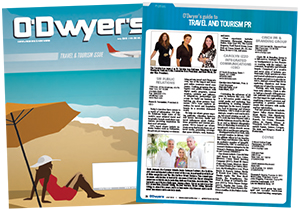

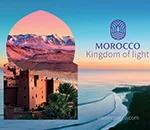 Weber Shandwick is providing PR and marketing communications services to the Moroccan National Tourist Office in New York.
Weber Shandwick is providing PR and marketing communications services to the Moroccan National Tourist Office in New York.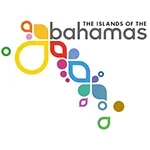 Finn Partners has filed its six-month contract with the Bahamas Ministry of Tourism, Investments & Aviation, which is worth $240K.
Finn Partners has filed its six-month contract with the Bahamas Ministry of Tourism, Investments & Aviation, which is worth $240K.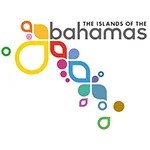 Weber Shandwick wrapped up its work for the Ministry of Bahamas at the end of 2023.
Weber Shandwick wrapped up its work for the Ministry of Bahamas at the end of 2023.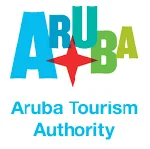 The Aruba Tourism Authority is boosting its budget 29.4 percent to $2.2M at Zeno Group, according to its 2024 contract, effective Jan. 1.
The Aruba Tourism Authority is boosting its budget 29.4 percent to $2.2M at Zeno Group, according to its 2024 contract, effective Jan. 1. As inflation continues to impact spending, consumers are revisiting their list of what they’re willing to spend more of their money on. Luckily for those in the travel industry, experiences seem to be trending up on the “splurge” list.
As inflation continues to impact spending, consumers are revisiting their list of what they’re willing to spend more of their money on. Luckily for those in the travel industry, experiences seem to be trending up on the “splurge” list. 


 Have a comment? Send it to
Have a comment? Send it to 
No comments have been submitted for this story yet.